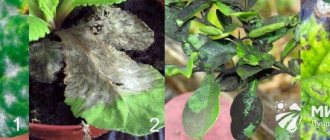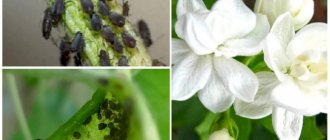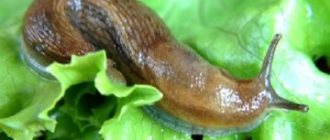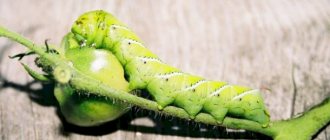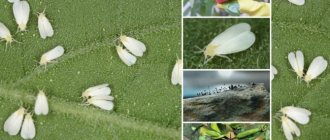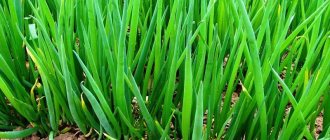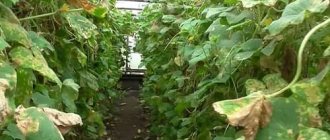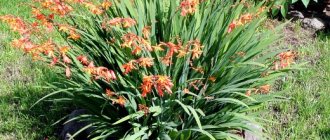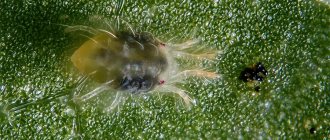Controlling tomato pests and diseases in open ground can be quite difficult, especially for novice vegetable growers. This is due to the fact that the culture is exposed to various parasites or pathogenic microorganisms. Any problem significantly reduces the yield and quality of the fruit. The most destructive result is the death of the plant. With the advent of new varieties with a long shelf life, new diseases have arisen. Infected or damaged tomatoes are not stored at all, further infecting the rest. Therefore, the control of pests or diseases in tomato beds has received the status of an integral part of agricultural cultivation technology. In order for it to happen on time, you need to read the description and photo of each disease or pest of tomatoes in open ground.
Types of Tomato Pests
Tomatoes are damaged by both pathogenic microorganisms and parasitic insects, which belong to different species and have various negative effects on plants. Based on this, it is very difficult to classify all existing pests into separate groups.
Entomologists conditionally divide tomato pests into 2 groups. The first group includes insects that damage the root system, and representatives of the second group infect the above-ground parts of plants - flowers, leaves and fruits. To detect a problem in a timely manner, it is important to know how a particular parasite manifests itself, and what needs to be done to prevent its occurrence or quickly eliminate it.
Signs of defeat
Identifying the Colorado potato beetle in tomato beds is not particularly difficult, since immediately after appearing in the garden it begins active “activity”. Pests can be identified by characteristic damage, which most often appears along the edges of leaf blades.
The larvae of Colorado potato beetles eat leaves from the edges to the center, so the presence of the pest is primarily indicated by the gnawed edges of the leaf blades. With extensive damage, they completely destroy all the tops.
Carefully inspect the above-ground part of the tomato bushes, paying special attention to the underside of the leaves. On them you can find a large number of orange eggs, tightly attached to each other.
Tomato root pests
Medvedka
Medvedka is one of the most common and dangerous. The most preferable soils for mole crickets are well-moistened and manured soils. Plants are damaged by both larvae and adult insects. The insect makes tunnels in the soil along which it crawls in search of prey. Then it gnaws the underground and partially above-ground part of the stem, after which the plant weakens and begins to wither.
Gardeners have been fighting this pest for years and are bringing results. Usually, agrotechnical measures are carried out for this purpose and chemicals are used. Treatment of tomatoes against pests of this type is usually carried out using drugs such as Medvetox, Thunder, Bankol, Grizzly, Phenaxin Plus. The complex of agrotechnical measures consists of:
- regular loosening of row spacing in order to destroy egg clutches;
- planting marigolds along the perimeter of the plot with grown tomatoes;
- installation of traps (pits with manure where insects lay eggs), installed in May.
Gardeners should understand that fertilizing the soil with mullein in damp areas of the land provokes the appearance of mole crickets, so this procedure should be excluded.
Wireworm
The larvae of this pest destroy the roots, as well as the bases of the stems. Externally, the parasites are similar to yellow worms, which are very difficult to crush. The larva lives for about 5 years, and in the first year of its existence it does not cause much trouble for summer residents, since, being tiny in size, it feeds mainly on weeds. Subsequently, the wireworm begins to eat cultivated plants, and thereby causes significant damage to the future harvest.
The fight against wireworms is very difficult. Good results can only be achieved by using several methods at once. The most effective chemicals against this pest are Force and Provotox. Granules of these insecticides are placed in planting holes, and then the drug is washed away with the help of precipitation, and thereby provides a residual rather long-lasting effect.
During the season, the larvae can be exterminated using homemade traps. To do this, you need to chop raw potatoes, string the resulting slices onto sticks and bury them in the ground on the site. After a few days, the traps are removed and the wireworm is destroyed. It is best to begin pest control in the fall by digging deep into the soil and removing weeds.
In the spring, you can plant green manure, which is best used as rapeseed or mustard - insects cannot tolerate them. To repel the larvae, you can plant some kind of legume crop near the area where you are growing tomatoes.
Root nematode
The length of an adult insect can reach 1.5 mm. Root-knot nematodes first settle in the roots and then gradually crawl onto foliage, stems and seeds. Since their main diet consists of plant sap, they damage living plant tissue. The phenomenon in which massive damage to vegetable beds by nematodes occurs is called meloidogynosis. Parasites are most active in hot and dry weather.
Insects create galls in the form of thickenings on the root system of tomatoes in order to lay eggs there, from which larvae will subsequently grow. Root development stops and the plants begin to become depleted, becoming affected by fungal and viral diseases.
For prevention purposes, the fight against nematodes involves planting cabbage or garlic. In addition, it is practiced to water the soil with hot boiled water, after which the treated area is covered with plastic film for several hours. Disinfection of garden equipment is mandatory. In addition, the soil is treated with the chemical preparation Fitoverm.
May beetle larvae
These pests look like thick white or yellow worms with three pairs of legs that are located in front. They are very voracious, and since they live in the ground, the root system of plants suffers most from them. If there is a significant accumulation of these pests in the garden, you can lose most of the tomato harvest.
To combat the cockchafer, deep digging of the soil with manual sampling of larvae is used. In addition, you can sow green manure, for example, white mustard, in early spring, and embed it in the ground just before planting tomato seedlings. The roots of mustard and other cruciferous vegetables contain substances that beetle larvae cannot tolerate.
Therefore, cabbage or another plant from the cruciferous family can be grown near tomato beds. Khrushchev and nitrogen do not tolerate well. Therefore, as a deterrent, you can use sawdust or straw soaked in urea, or mulch the soil around the tomato bushes.
In addition to manually collecting adult beetles, you can set up traps from humus. Before this, a hole with a diameter of 25 cm is made, which is filled with humus. Traps are installed in the fall, and before the onset of cold weather, the recess should be cleaned so that it is cold in them and these tomato pests in the open ground freeze in winter.
If all of the above methods do not produce results, you should resort to a radical method of struggle - the use of chemicals. Treating tomatoes against cockchafer pests involves soaking the roots of the seedlings immediately before planting in chemical solutions:
- Antikhrushch. The solution is prepared at the rate of 10 ml of product per 3 liters of water. Soaking duration is 40-60 minutes.
- Aktara 25. For soaking, take a 0.25% solution. Plant roots should remain in it for 2-3 hours.
- Prestige. To prepare 3 liters of solution you will need 30 ml of product. The soaking time is long - about 7-8 hours.
Diseases of tomatoes in open ground
In addition to pests, tomatoes are susceptible to many diseases. Knowledge about the signs and photos of tomato diseases in open ground helps to cope with the problem. Most often, viral lesions occur, which significantly reduce the yield and quality of fruits. The occurrence and spread of diseases is associated with environmental conditions and compliance with agricultural technology requirements. Timely detection of the problem and treatment saves the harvest.
Mosaic
A viral disease that occurs quite often.
An unpleasant disease for gardeners due to the difficulties of treatment. The disease virus is resistant to temperature changes and humidity fluctuations. The only way to save tomatoes from the disease is effective early prevention. It involves treating tomato seeds before sowing. A solution of potassium permanganate (1%) is used. If an adult plant is infected with a disease, then treatments will not save it. The leaves become variegated, the colors resemble a mosaic with alternating dark and light areas. The bush will begin to dry out and die. Such plants are removed from the garden bed and burned. If the variety requires pinching, then it is done very carefully so as not to touch the juice with your fingers. Tomatoes are planted in the morning.
Late blight
This tomato disease is a fungal disease.
When affected by the disease, brown spots appear on the stems and leaves, the underside of the leaf becomes covered with a white coating, and brown spots cover the fruits. The spread of the disease is facilitated by temperature changes and high humidity. To prevent infection, seedlings are treated with Zaslon 20 days after planting. Treatment for the disease is repeated with “Barrier” 3 weeks after the first. After the 3rd cluster blooms, spray the tomatoes with a garlic solution of 1 cup of ground garlic and 10 liters of water and 1 g of potassium permanganate. The solution consumption is 0.5 l per 1 sq. m. It is important to maintain balanced feeding.
Alternaria or macrosporiosis
The very first symptoms of the disease appear on the lower leaves of the tomato bush. Brown spots begin to increase, then cover the entire leaf, which gradually begins to die.
Spots on the stems transform into dry rot. The second name of the disease is dry spotting. A distinctive feature is the appearance of a black coating on the spot. Early ripening varieties are most often affected in warm and humid weather. As soon as the first symptoms are noticed, it is necessary to use chemicals - fungicides with zinc. Treatments for the disease are repeated 3 times after 2 weeks. It is important not to plant tomatoes next to potatoes. Treatment of tomatoes against disease in open ground can also be carried out with Fitosporin.
Apical rot
Signs of the disease appear on green fruits and resemble depressed spots.
They may be dry black or watery with a putrid odor. The causes of the disease are excess nitrogen, moisture deficiency, and lack of calcium. Measures to combat the disease are timely watering, spraying with a solution of calcium nitrate from 1 tbsp. l. substances and 10 liters of water. Tomatoes affected by the disease are burned.
Blackleg
Also a fungal disease that develops when there is waterlogging or excess fertilizer.
In addition, the causes of the disease can be contaminated tools or lack of soil disinfection before planting tomatoes. The roots begin to turn black and rot first, then the cuttings. As the disease develops, the plant looks lethargic, brown spots and drying appear on the leaves. Removed bushes must be burned. For preventive purposes, treatments are carried out with Ross, copper sulfate or Pseudobacterin-2. Before sowing seeds, they are treated with a fungicide. The best predecessors of tomatoes that prevent the occurrence of the disease are sunflowers and peas.
Cladosporiosis
The second name for the disease is leaf mold or olive spot.
The underside of leaves is affected. Brown spots with a characteristic gray coating appear on it. Spores are easily transferred to other plants and remain on clothing or tools. Control measures include optimizing watering - with warm water, in a timely manner and at daytime temperature. Preventive spraying against the disease is carried out with “Barrier” or “Barrier”; old leaves are also removed and the soil is disinfected. It is important to plant varieties that are resistant to the disease.
Gray rot
A fungal disease that spreads during the end of the growing season.
Tomato fruits are affected. Conditions for the appearance of fungus are rainy and cool weather. The fruits become covered with small spots, which then enlarge and produce brown watery spots. The pathogen also develops on flowers, stems and leaves. Vegetable growers often confuse gray mold with late blight. Preventative treatments for the disease are made with Glyokladin or Trichodermin, therapeutic treatments are done with fungicides. The best time is during the day to give the plant time to dry out.
Brown rot
Vegetable growers know the disease as phomosis.
Only tomato fruits are affected. A brown spot is located at the base of the fruit, then rotting continues inward. If the disease has spread to green tomatoes, they will not have time to ripen and will simply fall off. Fruits affected by the disease are burned and treated with Zaslon or Fundazol. Prevention is done with copper oxychloride or Bordeaux mixture.
Root rot
Greenhouse tomatoes are more susceptible to the disease, but in open ground it develops when planting bushes after cucumbers or excessive watering.
When affected by the disease, the roots rot and the plant dies. Prevention of this disease of tomatoes in open ground consists of disinfecting the soil with a solution of copper sulfate, removing the top layer, Radomil Gold and watering diseased tomatoes with Zaslon.
Fruit cracking
The cause of the spread of the disease is temperature fluctuations, moisture deficiency, hot and dry weather.
Another reason is the illiterate choice of variety, especially with thick skin. Cracking of fruits may occur after pinching tomatoes due to the resulting water pressure coming from the roots.
Video to help vegetable growers:
Pests that destroy the above-ground parts
Scoops
Tomato pests include the moth caterpillar. The appearance of an adult resembles a moth - it also flies around street lamps all night. In contrast, caterpillars hide in the upper layers of the soil during the daytime. At night, insects gnaw the stems of tomato bushes, as well as the fruits, after which holes from these pests appear on the tomatoes. If we talk about how to spray tomatoes against pests of this type, Fufanon, Karate and Zolon are most often used.
You can use molasses to catch butterflies. You should dilute it with water and then add yeast there. The resulting liquid is poured into a flat container and placed on a meter-high elevation.
Butterflies fly to the smell of molasses and die when they find themselves in the liquid. In the fall, the ground needs to be dug up and the rows need to be loosened during the period when the insect pupates. Controlling weeds is important as this is where cutworms usually lay their eggs. The collection of larvae from the bush can be done manually.
Sprout fly larvae
Adults usually lay eggs in soil that has just been fertilized with manure. The size of the gray fly can reach 6 mm in length. She herself does not pose a danger to tomatoes. However, after the appearance of the larvae, the situation changes.
These small pests damage the stems and sprouts, which is why the plant may not die, but will not bring a good harvest. Therefore, to prevent pests of tomato seedlings from damaging them in the greenhouse, before planting, the roots of the plants need to be soaked in a protective solution, for example, Zircon or Epine.
To destroy the larvae, the Fufanon-Nova insecticide is used. It can be used both when these tomato pests have infested in the greenhouse, and in cases of combating them in open ground conditions. The death of the pest is observed approximately one day after treatment.
An effective remedy against germ fly larvae is the domestic drug Fly Eater. Its granules are added to the hole before planting the seedlings. Since the drug takes a long time to dissolve in the ground, only one treatment is allowed per season.
Some summer residents treat tomatoes with tobacco infusion. Deep digging of beds at the end of autumn also helps to deal with this pest. The rapid removal of larvae is facilitated by the destruction of weeds and vegetation debris.
Prevention methods
Prevention is easier than treatment. This truth is also true in gardening. If you take preventive measures, the likelihood of pests infesting tomatoes will decrease significantly.
How to prevent pests:
- Carry out pre-planting tillage before planting tomatoes. Spill the soil with boiling water or a solution of copper sulfate (take 1 tablespoon of the drug per liter of water). It is advisable to dig the soil deeply throughout the entire area.
- Immediately remove plant debris from the site to avoid the spread of pests.
- Maintain soil crop rotation.
- Select varieties and hybrids of tomatoes for cultivation on the site that are resistant to pests and diseases.
Interesting on the topic:
Secrets of planting and caring for tomatoes
How often to water tomatoes in hot weather to get a good harvest?
What to do when tomatoes grow poorly
How to grow and tie tall tomatoes
How to feed tomatoes during flowering in the greenhouse and fruiting
Whitefly
The whitefly is a small, light yellow insect with gray legs and light wings. It usually affects tomatoes grown in greenhouses, as it feels more comfortable in a humid and warm environment. The insect is polyphagous. In addition to tomatoes, it feeds on other plants, including weeds (woodlice, dandelion, sow thistle), which help it survive in the autumn.
Eggs are laid by females on the underside of leaves. Soon microscopic larvae (0.3-0.4 mm) appear from them. Sticking to the leaves, they resemble light green scales. Usually, insects of different ages live on one tomato bush, and this significantly complicates the fight against them. In addition, the whitefly, being a carrier of various viruses, infects the plant with many diseases.
To prevent tomatoes from being infected by this pest, great attention should be paid to eliminating weeds, and doors and windows should be covered with gauze. An excellent way to get rid of whiteflies is to make your own sticky traps. To make them, you need to paint plywood sheets yellow and lubricate them with some sticky substance, for example, castor oil. The pest is attracted to the yellow color, so when it finds itself in close proximity to the trap, it sticks tightly to it.
To speed up catching, tomato bushes can be shaken from time to time. The butterflies that take off will immediately rush into the trap. The caught pests are removed and the traps are covered with a new portion of castor oil. A tobacco bush planted in close proximity to the tomatoes also serves as a trap, which should first be treated with some chemical substance, for example, the drug Actellik.
Colorado beetle
All gardeners are familiar with the Colorado potato beetle. It is easily recognizable by its yellow wing covers with black stripes. The body of the pest is convex, oval, 7-11 cm long and 4-7 cm wide. It damages the leaf part of the plant. One female lays 50-70 eggs on the underside of the leaf. The development of the Colorado potato beetle has several stages: at first the color of the larvae is dark gray, then it becomes red or red-orange and at the last stage it becomes orange-yellow.
Pupation of the larvae occurs in the ground, at a depth of 8-10 cm. Approximately 2-3 weeks later, the young generation appears. In the cold season, Colorado potato beetles prefer to stay in loose, dry soils, at a depth of 25-30 cm.
Around the middle of spring, when the temperature exceeds 13-15 degrees, the insect crawls out of the ground and begins to feed. First, nightshade weeds are used for this, after which the pests gradually move to potatoes and tomato bushes planted in the ground.
If the number of larvae and beetles is insignificant, then you can get rid of insects by collecting them manually. A jar is used as a collection container, into which a little kerosene is poured. In case of mass infestation, you can treat tomatoes against pests with such preparations as Sonet, Komandor, Iskra DE.
Spider mite
Most often, these pests can be seen in tomato beds after a long drought and heat. They occupy the inner sides of the leaves, entangling them with cobwebs. The juice is then sucked out of them, after which the foliage first becomes marbled and then brown.
Soon it begins to dry out. In such cases, many use garlic infusion to spray tomatoes against pests. To do this, you will need garlic peels (200 g), which are infused in water (1 l). The resulting solution can be sprayed on both seedlings and adult plants.
To get rid of spider mites, infested leaves must be burned. It is also advisable to periodically dig up the soil and ensure that there are no weeds on it. Actellik or Fitoverm can be used as insecticides.
Aphid
For many gardeners, midges on tomatoes are a huge problem. How to get rid of these microscopic dark green insects that live on the underside of leaves and feed on their sap? After all, these pests, which are called aphids, also attract ants that feed on their excrement. You can suspect the presence of parasites by yellow, drying leaves and wilting bushes.
The fight against aphids consists of:
- spraying infected plants with infusion of garlic or onion peels;
- dusting the cultivated area with wood ash or tobacco dust;
- moistening the bushes where insects live with a soap solution or flea shampoo;
- spraying infected plants with insecticides such as Karate, Fitoverm or Actellik.
Onion infusion
An infusion made from onion peels also works great against Colorado potato beetles.
As practice shows, one spraying a week is enough to prevent pest invasion and keep plants safe and sound.
Preparation:
- in a 3-liter (fill the container about a third full).
- Pour warm water over the plant material (fill the jar to the very top), close the lid.
- Infuse the product in a warm, dark room for two days; no need to stir.
- After straining, dilute with water (two parts of water for one part of onion infusion), add liquid soap as an adhesive.
The product is ready - you can start spraying the tomatoes.
Where do bugs come from?
Beetles, with the help of their well-developed, strong wings, can cover long distances. They prefer to feast on the leaves, buds and flowers of fruit trees. But not every garden falls under their attention. Adult individuals, first of all, think about their offspring, and therefore choose predominantly sandy and sandy loam soils for habitat. Fertile, loose areas fertilized with manure - underground passages can easily be built in them. And in the depths of such soils it remains warm even in winter, which means that the larvae can calmly survive the cold period, and in the spring they can get to the surface and attack newly planted vegetable seedlings. In addition, beetles reproduce in nitrogen-depleted soils. Therefore, if you neglected to apply nitrogen-containing fertilizers in the fall, then most likely the cockchafer has already taken a fancy to your garden.
Damage from insects
They cause the greatest damage to fields, namely grain crops, which is significantly reflected in the harvest. The fact is that at any stage of growth they need food, first young shoots and then grain. And if you take into account the stage of reproduction, then you can remember the larvae, which also want to eat.
They cannot eat grain in its pure form, for example, like rodents. It looks like this: an adult bites into a grain, after which a special enzyme is released that can completely change the structure of the grain. Next, the middle of the grain changes, and the structure becomes liquid. It is in liquid form that the insect eats it.
This procedure for absorbing food is also dangerous (for the crop) because it is enough for it to simply release its enzyme and the grain deteriorates and becomes unusable. In order to somehow protect the harvest, plants are checked at absolutely all stages of growth, from shoots to the harvest period. Of course, in order to not give the bugs a chance and to protect your future harvest, you will need to process them and do this procedure effectively during the period of milk maturity.
Additional tips and tricks
It is advisable in the spring to cover the soil around the planted seedlings with non-woven material. Mulching the soil around the plantings also has a good effect.
It also helps to prevent the Colorado potato beetle from reaching the plants if you dig trenches along the rows of seedlings and place a black film on their bottom. Insects weakened by a long winter will roll onto such traps themselves, after which all that remains is to collect them there.
Advice! Wanting to protect tomatoes as much as possible from the invasion of the Colorado potato beetle, never plant young seedlings in close proximity to potato beds.
To summarize the above, it should be noted that gardeners have come up with quite effective, but harmless to humans, methods of getting rid of the Colorado potato beetle. It is advisable not to use strong chemicals unless absolutely necessary. Only in this situation will it be possible to obtain a truly useful, environmentally friendly harvest of tomatoes on your own country plot, which can be safely harvested as canned food for the winter.
Chemical treatment
Of course, the chemical method is not the best method, but it often turns out to be the most effective. Preparations that can be used to treat tomatoes are divided into 3 groups:
- contact (Fury, Arrivo, Inta-Vir);
- intestinal (Tantrek, Konfidor);
- systemic (Aktara).
All these compounds are extremely toxic, so when processing you need to take personal protection measures. In addition, substances are removed from tomatoes gradually, over 20-30 days, which means that spraying should be carried out before the ovary appears.
How to fight?
The Colorado potato beetle, which eats nightshade crops at a tremendous speed and also multiplies rapidly, can become a real natural disaster for your garden plot. Controlling it is very difficult because this type of pest can survive well in a wide variety of climates. In addition, it has an incredible ability to adapt to various chemicals.
What to do to protect your garden from the Colorado potato beetle? One-time measures will not help here. The work must be ongoing. The main methods of control include the following:
- Direct manual collection of beetles and larvae from plants;
- Birds, other insects and microorganisms can help get rid of it;
- The agrotechnical method includes a system of actions that are aimed at increasing plant resistance. It is important to thoroughly loosen the soil and dig it up in the fall. It can be helpful to experiment with varieties, choosing one that beetles won't eat;
- Regular spraying using modern chemicals.
Perhaps folk remedies for the Colorado potato beetle will also help. Experienced gardeners advise planting plants such as garlic, legumes, calendula, and nasturtium in close proximity to potatoes and tomatoes. They will be able to scare away the Colorado.
